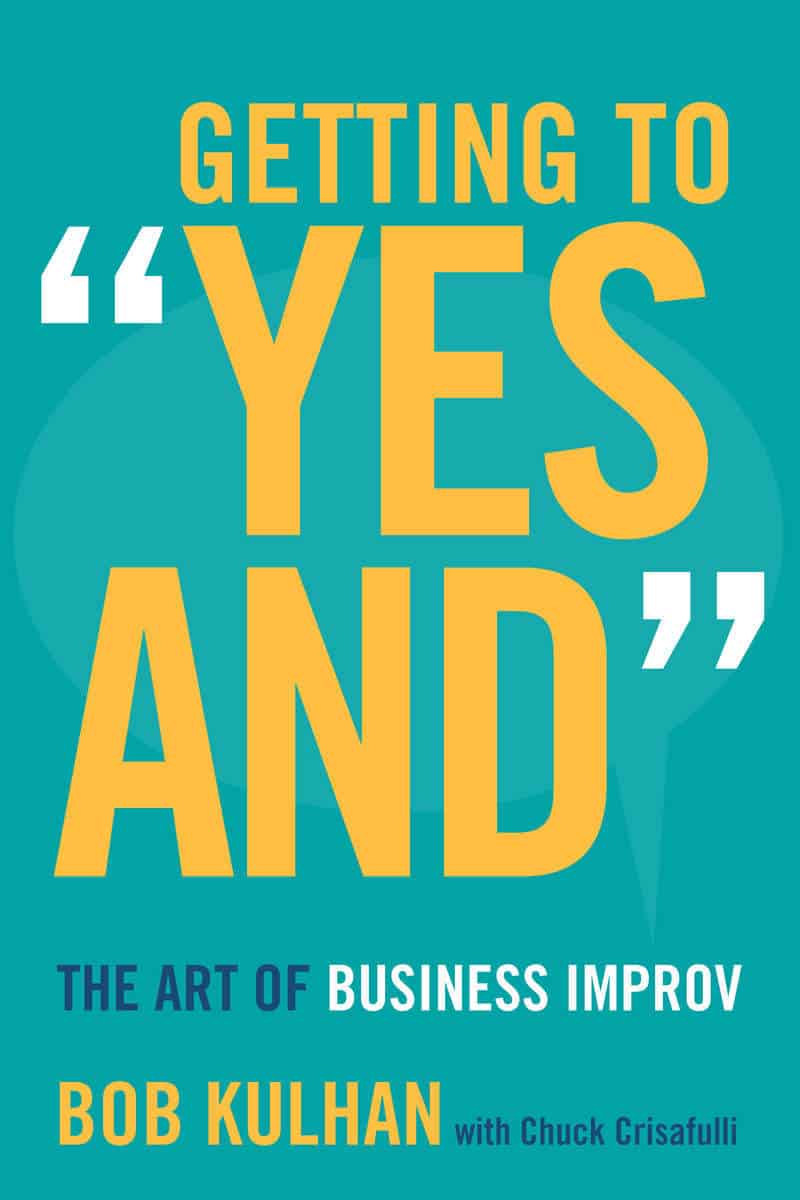Getting to “Yes And”
The Art of Business Improv
Author: Bob Kulhan & Chuck Crisafulli

No available rating

👍GetAbstract Rating: 8/10

GetAbstract Summary Preview
In the early morning of May 2, 2011, a team of Navy SEALS invaded a compound in Abbottabad, Pakistan and killed Osama Bin Laden. As author Bob Kulhan writes in his book, Getting to “Yes And”: The Art of Business Improv, “the mission had been meticulously planned: the SEALS trained for it over months and several contingency plans were developed and put into place.” Unfortunately, during the raid, one of the team’s helicopters crashed. In addition, “the SEALS discovered that the intelligence they’d based their plans on was not entirely accurate,” he writes. “There were a number of unknown variables (how many people they would encounter, the types of people, the weapons, the doors, and hallways, etc.). So they had to improvise.”
The Osama Bin Laden raid may seem a surprising choice as the first case study to appear in a book written by a veteran stage performer and alumni of the famed improvisational troupe Second City. The story underscores, however, Kulhan’s point that the techniques of improvisation are valuable and important in any domain.
Much More Than Laughs
The building blocks of improvisation, Kulhan writes, are reacting, adapting, and communicating — building blocks that are equally valuable in dealing with uncertainty or the unexpected. “Improvisation,” he explains, “is a key element of busy emergency rooms; it takes place on NBA basketball courts; it’s a part of the skill set for every policeman cruising the streets — all contexts in which comedy is certainly not intended to be part of the picture.”
As for business, Kulhan writes, “the same skills that make for exceptional comedic improvisation — intense listening, focus, energy, engagement, teamwork, authenticity, adaptability — are skills that any businessperson can use to make positive changes in the workplace.” Improvisation, Kulhan argues persuasively, is clearly not just “making stuff up” to be funny.
Getting to “Yes And” explores how to apply improvisational skills to the business arena. In detailed and grounded chapters, Kulhan shows how improvisation can be applied to personal development, communication, team building, leadership, and changing a corporate culture.
The first step, however, is to understand what Kulhan calls “the cornerstone philosophy of theatrical improvisation” –– the titular concept of “Yes And.” An actor must never reject what another performer has put forth. If actor one says, “It’s hot in this kitchen,” the second actor never says, “No, it’s not, it’s cold” or “No, we’re not in the kitchen, we’re in the living room.” Instead, the second actor might say, “Yes, it is hot. And the fact that I set the house on fire probably isn’t helping any.”
Without “Yes And,” improvisation is impossible, Kulhan writes. As he explains, “A violation of ‘Yes And’ means the scene crumbles, because a performer’s pursuit of a personal agenda (‘Look at me — funny, funny me!’) negates what’s been built and doesn’t give the other performers in the scene anything to build on.”
Kulhan is aware that in business, requiring people to build on the work or ideas of others might be limiting. What if you have a better idea? Kulhan notes that in a business context, “Yes” indicates that you have listened fully to what someone has just said, that you’ve made the effort to understand it and that you are willing to consider it,” Kulhan explains. “’And’ then allows you to step across the verbal bridge from someone else’s thought to your own response.”
Kulhan emphasizes that the point of improvisation is not for everyone to get along. It is for everyone to work together toward a common goal and without a personal agenda.
About The Author & Review
About The Author:
Second City actor Bob Kulhan is the president, CEO and founder of the Business Improv consultancy and an adjunct professor at Duke University’s Fuqua School of Business and at Columbia Business School. Chuck Crisafulli is a veteran entertainment journalist and the author of Go to Hell: A Heated History of the Underworld and the co-author of Me and a Guy Named Elvis, with Jerry Schilling.
Review:
Improvisational comedy workshops have become a popular feature of corporate training, but Bob Kulhan, a comedian with the Second City improv troupe, a business consultant and a professor, says they generally don’t offer much value. Writing with Chuck Crisafulli, Kulhan argues that such programs would be more relevant if they adapted the skills of the stage to the distinct demands of commerce. He covers applying improv stagecraft tenets like “suspending judgment” and listening actively to other situations, such as when you’re guiding business strategy, stimulating colleagues’ creativity or developing a personal brand. Kulhan stays relentlessly on topic, adopting a casual, friendly tone and occasionally indulging in a joke. getAbstract finds that this refreshing perspective on familiar business issues offers laughs and lessons for executives, entrepreneurs and all those who need to think on their feet.

